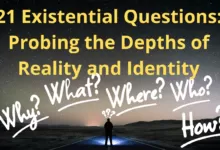Quiz: Do I Have Bipolar Disorder? Self-Assessment

Have you checked in on your mental health lately? Emotional highs and lows might mean more than mood swings. They could suggest bipolar disorder. It’s crucial to recognize and evaluate these signs. Our anonymous quiz is your guide to understanding your mental health better.
Could your sudden bursts of energy or unexpected low moods point to bipolar disorder? Our quiz helps you look into your feelings and behaviors. It offers insights into whether these could be signs of bipolar disorder.
Starting this path of self-exploration, we aim to give answers and understanding. Knowing the significance of assessing yourself can lead to better awareness and steps to take next. Are you prepared to face the questions that could change how you see your emotions?
Understanding Bipolar Disorder: An Overview
Bipolar disorder is a complex mental illness with big mood changes. These changes range from manic episodes of high energy to deep sadness in depressive episodes. Understanding it is key to recognizing its effects.
The term “bipolar disorder” covers several types, like Bipolar I, Bipolar II, and Cyclothymic Disorder. Each one has its own symptoms. But all affect daily life through unpredictable mood swings.
| Symptom | Manic Episode | Depressive Episode |
|---|---|---|
| Mood | Euphoric or overly irritable | Sad, empty, or hopeless |
| Energy Levels | Significantly increased | Decreased; fatigue |
| Sleep Patterns | Decreased need for sleep | Oversleeping or insomnia |
| Behavior | Risky, impulsive actions | Withdrawal from activities once enjoyed |
| Thought Patterns | Racing thoughts; grandiosity | Indecisiveness; feelings of worthlessness |
Learning about bipolar disorder is crucial. It’s not just academic. Recognizing and managing it early can greatly improve life for those affected. Knowledge about this illness points to treatments like medications, therapy, and lifestyle changes.
Understanding bipolar disorder affects everyone, not just the individual. It helps society by building empathy and support systems. By knowing more about it, we create a foundation for better management and reduce mental health stigma.
Recognizing the Symptoms of Bipolar Disorder
Bipolar disorder is a mental health issue with big mood changes. These include highs (manic episodes) and lows (depressive episodes). It’s important to know the symptoms to help yourself or someone else. Recognizing them is key to getting professional help and treatment.
Identifying Manic Episodes
Manic episodes mean long times of feeling extremely upbeat or irritable. People may have more energy, need less sleep, and feel overly happy or important. They might act without thinking and have so many thoughts, they find it hard to function well at work or with friends. Below, see a table comparing common symptoms of manic episodes.
| Symptoms of Manic Episodes | Impacts on Daily Life |
|---|---|
| Excessive energy and euphoria | Decreased need for sleep, difficulty completing tasks due to hyperactivity |
| Grandiose beliefs and overconfidence | Engaging in risky behaviors with disregard for consequences |
| Racing thoughts and speech | Impulsive decision-making, strained relationships |
| Irritability and agitation | Potential conflict with others, disruption of peace |
Understanding Depressive Episodes
Depressive episodes are the opposite. They bring deep sadness or a feeling of hopelessness. People lose interest in what they once liked and can’t do their daily tasks well. Sleep and self-esteem may suffer too. Depressive episodes are very disabling and need to be recognized early. The next table shows common symptoms of depression and their effects.
| Symptoms of Depressive Episodes | Impacts on Daily Life |
|---|---|
| Persistent sadness or emptiness | Withdrawal from social interactions, reduced work performance |
| Loss of interest in activities | Lack of motivation, neglect of personal responsibilities or hobbies |
| Feelings of worthlessness or guilt | Low self-esteem, increased self-criticism, potentially self-harm |
| Changes in appetite or weight | Unintended weight gain or loss, potential nutrition issues |
| Fatigue or loss of energy | Impaired ability to maintain regular daily routines |
Both manic and depressive episodes are serious and greatly affect one’s life. Knowing the signs of bipolar disorder is the first step toward handling it.
Quiz: Do I Have Bipolar Disorder?
Taking a bipolar disorder quiz is a great first step in checking your mental health. It checks for symptoms of bipolar disorder but can’t replace a doctor’s opinion. Still, it’s a helpful start to figure out if you need more detailed check-ups.
This online quiz is easy to access and asks questions about feelings and behaviors common in bipolar disorder. Your answers help see if your symptoms match those of bipolar disorder. If they do, it’s wise to see a healthcare pro for more advice. Remember, this quiz helps you think about your mental health. It’s not the final say.
Answering the quiz honestly helps you get the most accurate idea of where you stand. Knowing yourself is key to managing bipolar disorder. This quiz is a good step toward understanding your mental health better.
Our bipolar disorder quiz is made like what doctors use for a first look. But remember, diagnosing mental health can be complex. This quiz doesn’t replace detailed work a professional does. It’s an initial step, not the complete picture.
If your quiz results hint at bipolar disorder, talking to a pro is a smart move. They can give a full check-up and work with you on a plan. Starting with a screening tool helps move toward getting the right support.
Why not start the quiz now? It could be your first step to understanding and improving your mental health.
The Importance of Bipolar Disorder Self-Assessment
Recognizing the importance of self-assessment in bipolar disorder helps with early detection and effective management. This knowledge lets people know when to get professional help. Self-checks are more than tools for diagnosis. They help increase awareness of mental health.
This awareness helps spot and deal with mood changes. These are part of the illness.
Self-assessment serves as an initial check. It sees if a full clinical check is needed. With early detection, effective management starts sooner. This can lessen its impact on someone’s life. Still, remember, it can’t replace a professional diagnosis.
Early action often leads to better health outcomes. Regular self-checks for bipolar disorder mean getting help and support when needed.
In summary, bipolar disorder self-assessment is key for timely care. It’s a critical step for thorough mental health care. It’s very important in managing the disorder well.
Manic Versus Hypomanic Episodes: What’s the Difference?
Bipolar disorder shows different signs during manic and hypomanic episodes. Knowing the differences is key for those with the disorder. It helps manage and treat their condition better.
Symptoms of Manic Episodes
Manic episodes come with a very high mood lasting a week or more. People may feel overly important, need less sleep, talk a lot, have racing thoughts, get distracted easily, be more active with goals, and take big risks. These episodes can really disrupt daily life. Sometimes, people need to go to the hospital to stay safe.
Characteristics of Hypomanic Episodes
Hypomanic episodes are like manic ones but not as intense. They don’t mess up how you work or socialize much. They last four days or more, with a high or irritable mood, more energy, and some mania symptoms but milder. There’s no psychosis with hypomanic episodes, and hospital stays are rare.
| Symptom | Manic Episode | Hypomanic Episode |
|---|---|---|
| Mood | Intensely elevated, irritable | Elevated, irritable, but less intense |
| Duration | At least one week | At least four days |
| Functioning | Marked impairment | No significant impairment |
| Risk Behaviors | Excessive involvement | Possible, but less likely |
| Hospitalization | Often necessary | Rarely necessary |
| Psychosis | Possible | Absent |
Telling manic and hypomanic episodes apart is crucial for the right diagnosis and treatment. While they seem similar, their impact on everyday life is different. Understanding these differences helps in treating bipolar disorder. It allows for better, customized care for those who have it.
Bipolar I and Bipolar II Disorders: Knowing the Subtypes
Knowing the subtypes of bipolar disorder is key to proper diagnosis and treatment. Bipolar I disorder and bipolar II disorder each show specific mood patterns. This affects how doctors approach and treat them.
Bipolar I disorder features at least one manic episode. This episode might come after or before hypomanic or major depressive episodes. Such manic episodes are intense. They can disrupt life, sometimes needing hospital care for safety.
In contrast, bipolar II disorder sees at least one hypomanic episode and one major depressive episode. Hypomania isn’t as severe as mania. It doesn’t disrupt life as much, but still impacts a person’s daily life and happiness.
Spotting these subtypes is crucial. It helps with choosing the right treatment. The presence or lack of manic episodes is a key factor in this. Below, you can find a table comparing both bipolar I and II:
| Feature | Bipolar I Disorder | Bipolar II Disorder |
|---|---|---|
| Main Episode | Manic | Hypomanic |
| Severity | Severe enough to impair daily functioning or necessitate hospitalization | Milder than manic episodes but still noticeable changes in behavior and functioning |
| Duration of Episodes | Manic: At least 7 days | Hypomanic: At least 4 consecutive days |
| Depressive Episodes | Often occurs before or after a manic episode | At least one major depressive episode is required for diagnosis |
| Experiencing Mixed Features | Possible during manic episodes | Possible during hypomanic or depressive episodes |
Both disorders are mental health conditions that can be managed well. This needs a full plan that includes medication, therapy, and lifestyle changes. Understanding the differences between bipolar I and bipolar II disorders helps to give personalized care to those affected.
It’s important to know that only a trained mental health expert can make a diagnosis. While self-learning is helpful, it’s no replacement for a proper check-up.
Misdiagnosis and Conditions with Similar Symptoms
Diagnosing mental health conditions is tough because many have similar symptoms. In particular, bipolar disorder shares symptoms with other disorders, causing confusion. Correctly identifying the disorder is vital for the right treatment and recovery.
Misinterpreting Bipolar Disorder
Misunderstanding bipolar disorder is common. This is often due to its symptoms resembling those of other issues. Mood swings, a key sign of bipolar, are also seen in different mental health problems. This makes careful evaluation essential to prevent a misdiagnosis.
Conditions Often Confused with Bipolar Disorder
Certain conditions with similar symptoms are often mistaken for bipolar disorder. These include major depression, schizophrenia, borderline personality disorder, and substance use disorders. Let’s examine the main features of these conditions to spot the differences:
| Condition | Similar Symptoms | Distinguishing Factors |
|---|---|---|
| Major Depression | Persistent low mood, Fatigue, Changes in sleep pattern | Lacks the manic or hypomanic episodes characteristic of bipolar disorder |
| Schizophrenia | Mood swings, Hallucinations, Delusional thoughts | Presence of psychosis not necessarily tied to mood episodes, as in bipolar disorder |
| Borderline Personality Disorder | Impulsivity, Emotional instability, Relationship issues | Emotional shifts are typically more rapid and response-driven compared to bipolar mood cycles |
| Substance Use Disorders | Mood alterations, Risky behaviors, Withdrawal symptoms | Substance use can mimic or exacerbate bipolar symptoms but is distinct in its root cause and therapy |
Identifying bipolar disorder from other mental health conditions is challenging. It’s not just about the symptoms, but also the patient’s full medical history. A detailed evaluation by a mental health expert is key. It helps avoid misdiagnosis and ensures the treatment is on target.
When to Seek Professional Help for Bipolar Disorder
Realizing you might have bipolar disorder is a big step. It often leads to wondering when to seek professional help. Beginning with a mental health assessment is vital. It helps understand what you need and your treatment choices. Getting help early can ease symptoms and help manage them over time.
Assessing Your Mental Health
Knowing the signs and what triggers your bipolar disorder is key. A detailed mental health assessment is crucial for this. It helps you keep an eye on your actions, feelings, and thoughts. When these start affecting your life a lot, it’s time to get a professional assessment.
Finding the Right Mental Health Professional
Choosing a mental health professional skilled in bipolar disorder treatment can change how you manage the condition. It’s important to find someone who not just knows a lot about bipolar disorder. But also understands what you’re going through. This person can diagnose you and create a personal treatment plan. This might include medicines, therapy, or both. They will also be by your side, guiding you towards feeling stable and healthy.
What Your Self-Assessment Results Mean for You
Understanding your self-assessment results is key to knowing your mental health better. It’s especially true if you’re looking at a possible bipolar disorder diagnosis. These results are just the start, not the final word. If they point to bipolar symptoms, it’s time to see a professional. Doctors will pair your self-assessment with a thorough check-up to make an accurate diagnosis.
Bipolar disorder has many treatment options. These range from meds to therapy, or often, a mix of both. It’s best to have a doctor guide you through these choices. Below, we dive into the main ways to treat bipolar disorder and how they help.
| Treatment Category | Description | Implications for Bipolar Disorder |
|---|---|---|
| Medications | Mood stabilizers, antipsychotics, and antidepressants. | Helps to manage mood swings and prevent the recurrence of both manic and depressive episodes. |
| Psychotherapy | Cognitive Behavioral Therapy (CBT), family-focused therapy, or psychoeducation. | Supports individuals in understanding their condition and developing coping strategies. |
| Lifestyle Management | Regular sleep patterns, exercise, and stress management techniques. | Aids in reducing triggers and maintaining a stable mood over time. |
| Support Groups | Peer-led groups providing shared experiences and mutual support. | Offers a community of understanding, reducing feelings of isolation. |
| Emergency Treatment | Hospitalization or intensive outpatient programs during acute episodes. | Ensures safety and stabilizes severe mood disruptions when immediate intervention is needed. |
The self-assessment results are just one part of dealing with bipolar disorder. If your results raise flags, see it as a push to get professional help. With a healthcare provider, you can find the best treatment options for you. This is a big move towards stability and a better life.
Conclusion
In our journey through the bipolar disorder article, we’ve learned a lot. We explored symptoms, from manic highs to depressive lows. We saw how knowing oneself is key to spotting this condition. This knowledge leads to bravery in seeking help and understanding of bipolar disorder.
Knowledge is a powerful tool in the fight for mental health. With the right info and resources, like quizzes and screenings, we build a defense. This helps catch mental health issues early. Early detection means better management and wellness.
As we wrap up, we’re called to boost mental health awareness. There’s no room for stigma or misunderstanding in talking about bipolar disorder. Let’s teach, support, and fight for those dealing with it. Together, we can aim for mental strength and overall healing.








